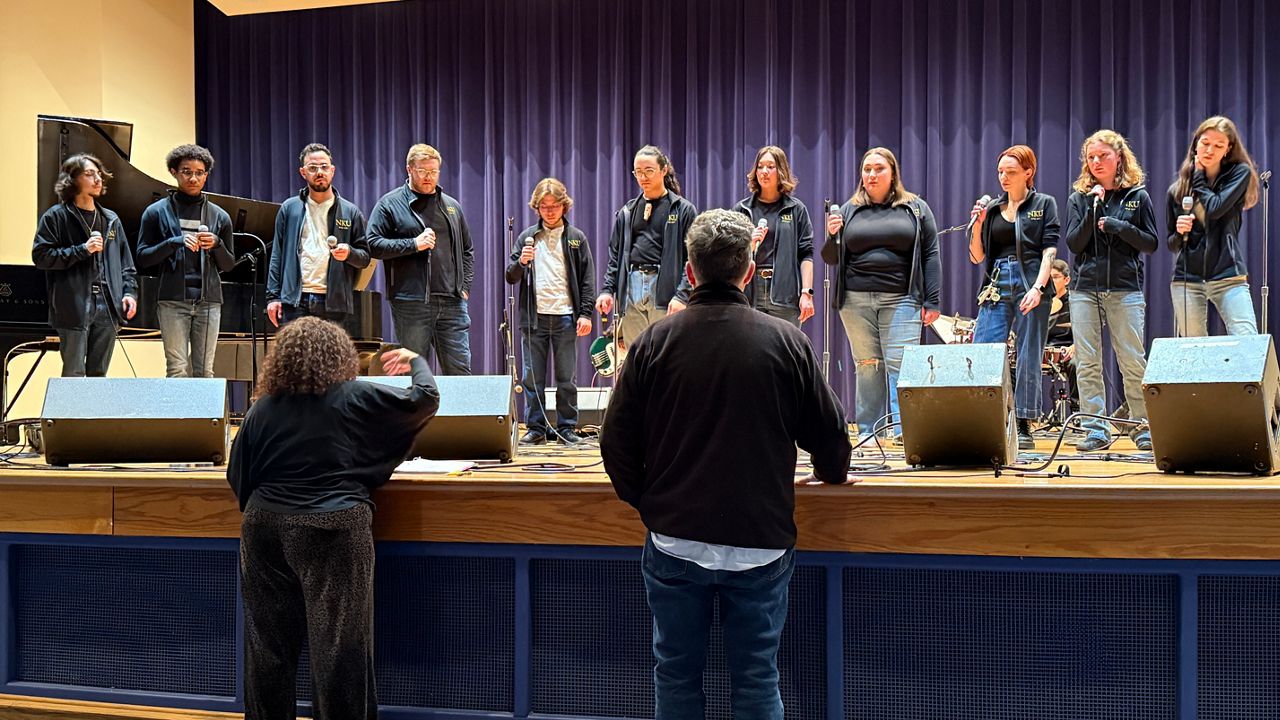ERLANGER, Ky. – The Cincinnati/Northern Kentucky International Airport has a high need for aircraft mechanics. The airport is taking a direct route to addressing that need, inviting a company to build a new mechanic school directly on its campus. That school could play a critical role in keeping one the most important parts of Northern Kentucky’s economy operational.
An aircraft maintenance company, FEAM Aero, has a prominent hangar on the airport’s campus and is in the process of building a large second hangar. Currently, FEAM employs about 300 mechanics to work on planes at the Cincinnati airport, but Cincinnati/Northern Kentucky International Airport CEO Candace McGraw said the need is much greater.
“Aircraft mechanics are critical to keeping the airport operating. Think of all those great wide body flights that are coming in here, be it passenger aircraft like British Airways, which we’ll be starting in June, or all of the cargo companies that we have here,” she said.
In fact, McGraw said the Cincinnati airport is the seventh largest cargo airport in North America. And with its continued growth, McGraw said she expects it to continue climbing that ranking.
“In order to support all those flights, and the future growth, you need mechanics working on those aircraft,” she said.
The airport and FEAM seem to have found an epic solution by partnering with the Epic Flight Academy. The Florida-based company already has one aircraft mechanic training facility in its home state. Now it’s building one that’s double the size on at the Cincinnati airport.
Epic Flight Academy COO Josh Rawlins said Epic originally set out with the goal of addressing the pilot shortage.
“The demand for mechanics now has almost exceeded that. Obviously, the more airplanes you add a couple pilots, but you add many more mechanics. And the technology in these aircraft is getting greater and greater. So the more technology you add, the more mechanics you need to know that technology,” Rawlins said.
The goal is to have the new facility up and running in the first quarter of 2024, and for 250 new mechanics to walk out with their aviation mechanic professional certifications 19 months later.
Kentucky currently only has two aviation maintenance professional schools. Both are in community colleges. Rawlins said a lot of people who pursue an AMP certification have to do so in shopping malls and car dealerships.
“When they get out of school and they go to work for the first time, and they walk up to one of these airplanes, it can be extremely overwhelming for somebody starting their career,” he said.
Being able to walk out of a hangar and see planes taking off and land will be a huge advantage to students at the new school, Rawlins said. And airport officials hope having homegrown mechanics will be a major asset to the ecosystem at the airport.
Cincinnati Commercial Contracting will manage the building design and construction process. When completed, the building will be 32,292-square-feet with parking and classroom space to house up to 300 students and staff.
The addition of the mechanic school ties into the Cincinnati/Northern Kentucky International Airport’s overall strategic plan to redefine and elevate the role of the airport. McGraw said, in the future, they hope to attract more manufacturers of aircraft parts.










